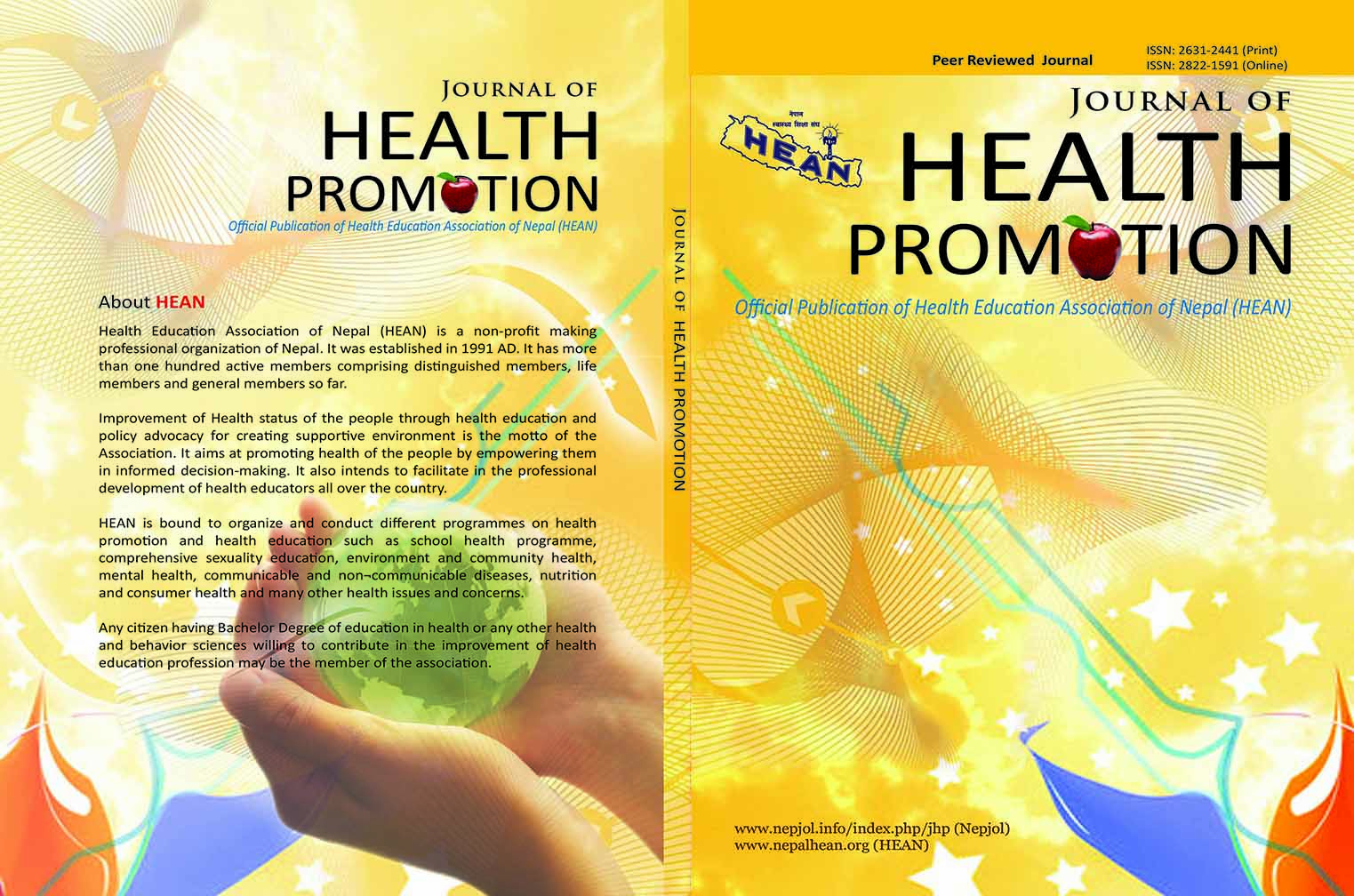Knowledge and Use of Emergency Contraceptive Pills among Bachelor's Level Female Students of Kathmandu Valley
DOI:
https://doi.org/10.3126/jhp.v8i0.32990Keywords:
Emergency contraceptive, Knowledge, use, Bachelor's level female studentAbstract
Emergency Contraceptive Pill (ECP) is used for preventing pregnancy after having unprotected sexual intercourse, contraceptive failure or forced sex. The use of ECP within 120 hours of sexual intercourse could prevent unwanted pregnancy and its adverse effects particularly unintended childbirth and unsafe abortion. The study, therefore, aimed to assess knowledge and use of emergency contraceptives among Bachelors level female students from Kathmandu Valley. A descriptive cross-sectional study was undertaken from August to November 2017 among 347 female students who were studying at the Bachelors's level. A random sampling technique was used to select study participants and a structured self-administered questionnaire was used to assess the knowledge and use of ECP after securing informed consent. Epi data and SPSS version 22 were used for data processing and analysis. The mean age of the female students was 21.5 years. Overall, 91.4% of the respondents had ever heard about emergency contraceptives. The main sources of information were radio or television, the internet and newspapers. About 4.6% of the undergraduate female students used ECP. Age, marital status, use of contraceptives and knowledge of ECP used within 72 hours were significantly associated with use of ECP. Although the findings of this study showed a high prevalence of knowledge among respondents, the improvement of female students’ knowledge on specific details of ECP and its advantages/disadvantages and timely utilization needs to be considered for any future awareness programmes.
Downloads
Downloads
Published
How to Cite
Issue
Section
License
© Health Education Association of Nepal (HEAN)
Authors are required to transfer their copyright to the Health Education Association of Nepal (HEAN).
The materials of this publication may be reproduced, reviewed and translated, acknowledging the source "Journal of Health Promotion".




